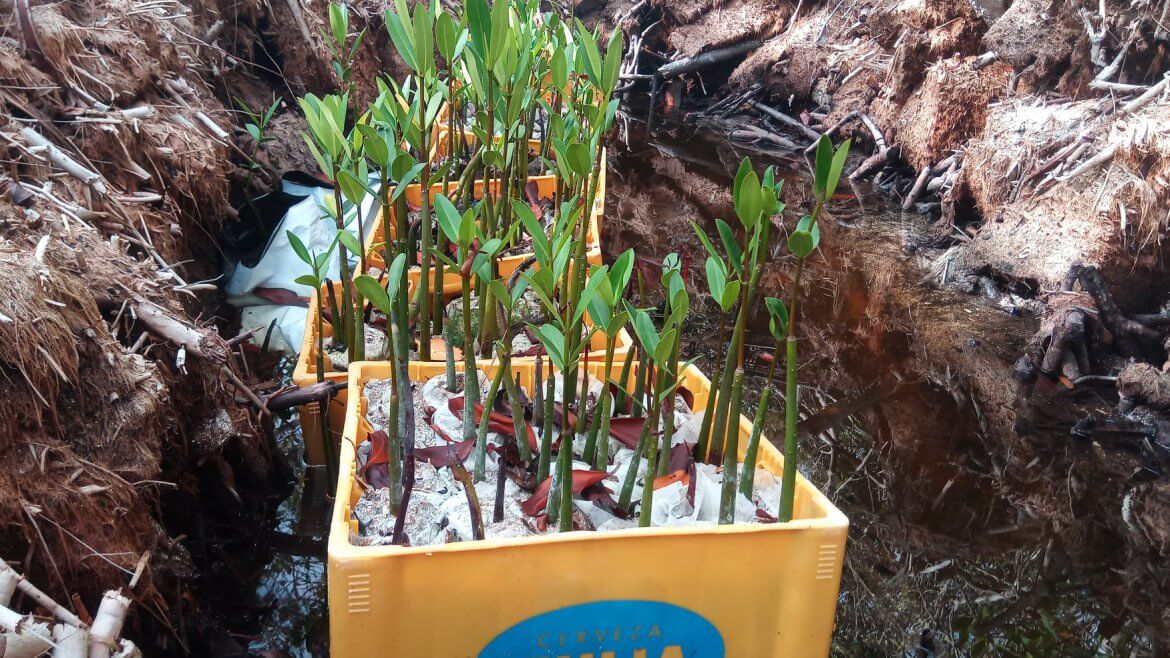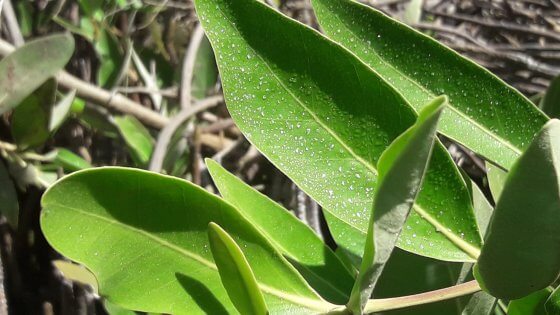Mangrove Nurseries
Building and maintaining mangrove nurseries allows us to help create the next generation of mangroves for Bonaire. Maintaining natural conditions within the mangroves ensures these new baby plants are able to withstand their natural environment when outplanted around the island.
Mangrove Nurseries
Five areas within the mangroves have been selected for nursery locations. These locations vary in light availability, salinity and amount of free water flow. The goal is to determine which location supports the healthies mangroves and better understand the life cycle of these critical species.
Mangrove Species
Red Mangroves (Rhizophora mangle)
Red mangroves are the most adapted to life within these harsh salty environments. With their large, picturesque prop roots, they are able to reach up and out of the water. Furthermore, a thick coating within their root system allows them to block most salt from being absorbed, and what little salt does make its way into the plant is expelled through its root system. These mangroves also have a unique way of replicating, creating a genetic clone of themselves, known as a propagule, which free floats within the mangroves until it finds a place to settle.
These propagules can be collected year round on Bonaire and planted directly within the nursery. Red mangrove propagules are grown in the nursery until they are ready to be outplanted, where they are then placed along the southwestern coast and in degraded mangrove areas around Lac Bay.
Black Mangroves (Avicennia germinans)
Black mangroves are the second most abundant species of mangrove found on Bonaire. Adapted for life in thick mud, this species has developed pneumatophores or snorkel like roots which stick straight up out of the mud to get air. Black mangroves can be distinguished by their rounded leaf shape which often layered in salt along the bottom and delicate white flowers.
Black mangroves can grow from propagules (like the red mangroves) or small tear shaped seeds. These seeds can only be found seasonally and typically fall from the tree and free float until they find a suitable settling place in neighboring mud.










